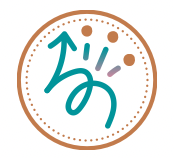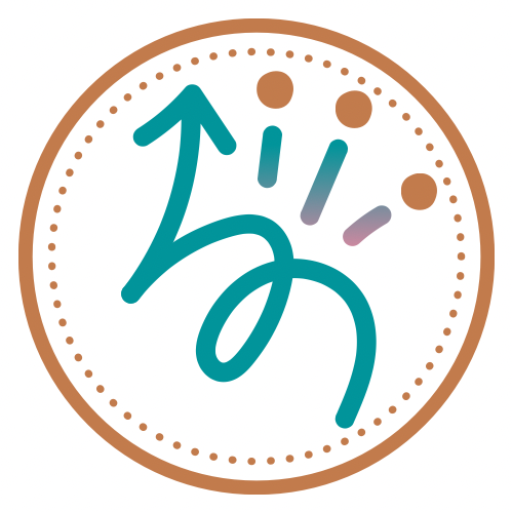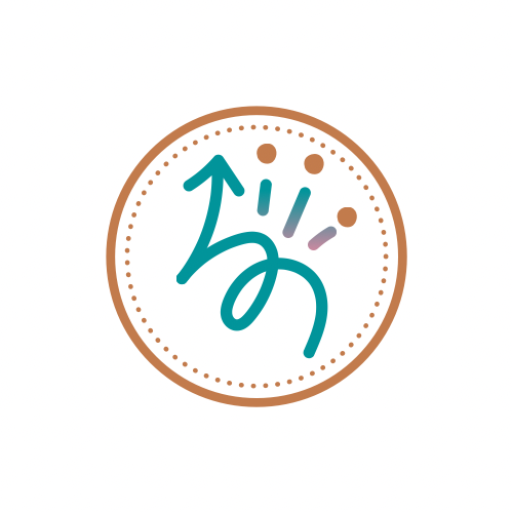Fine Motor Strengthening Tennis Ball Activity
With this quick and easy tutorial, learn to make a fine motor strengthening tennis ball tool. Have fun while working on strengthening the hand and fingers muscles during a variety of engaging activities. This fine motor strengthening gadget tutorial includes 11 activities that focus on fine motor and grip strength using the tennis ball as well as 25 additional fine motor strengthening activities for home. This occupational therapy tool is great for kids and adults alike.

This content is not intended as a substitute for medical advice, diagnosis, or treatment. Always seek the advice of your physician, therapist, or other medical professional regarding a medical condition or treatment. This content is for informational purposes only. See full disclosure here.
All links in this post are non-affiliate links and are provided for your convenience.
Back when I was in occupational therapy school and completing my final fieldwork level 2 placement at an awesome private practice pediatric center, I first used today’s project. There I had the opportunity to work in early intervention (0-3 years population) as well as in the clinic. It was during one of my early intervention visits at a daycare center that I met a sweet little guy who loved using today’s tennis ball project. He would giggle and laugh at the tennis ball “eating” pom poms and other small objects. I mean, a sweet, full of joy, laughter. Little did he know that this small, but mighty tennis ball was an incredible fine motor and hand strengthening activity for him. He called the tennis ball “Mr. Crackers,” and Mr. Crackers has been his name since then as I have introduced this fine motor gadget to many children over the years. So many sweet memories.
A special thank you to my college roommate and bestie, another amazing occupational therapist, who gifted me Mr. Crackers all those years ago.

Today’s Project
Today’s project is a finger and grip strengthening fine motor tool that is made by cutting a slit into a tennis ball to make a mouth. Eyes and other facial features are drawn on using a black Sharpie. Pieces of crumpled paper, medium sized beads, coins, pom poms, cotton balls, or other small items are “eaten” by the tennis ball’s mouth. To open the mouth, the sides of the mouth are squeezed.
The mouth of the tennis balls can be made shorter or wider based on fine motor strength needs. Tennis balls with a shorter opening will be more difficult to open and require more hand strength. On the other hand, tennis balls with a wider mouth will be easier to open. Today, I made both types of feeding tennis balls- one easier to open, and one that requires more strength so that I have both available when needed.
How To Use The Tennis Ball As A Fine Motor Strengthening Activity
There are many ways to use this fine motor gadget as a strengthening activity. Below I describe several ideas for using this activity at home or during therapy sessions. Of course, you can come up with your own creative way to use this hungry tennis ball.
* Caution! Small items may be a choking hazard for children under the age of 3 years, or for anyone who chews on non-food items.

#1: Feed The Tennis Ball
Place small items on the floor or tabletop. Small items such as beads, pom poms, small pieces of crumpled paper, cotton balls, larger dried noodles or marbles can be placed on the countertop or floor. Squeeze the sides of the mouth to feed the tennis ball.
#2: Reach Across Midline While Working On Fine Motor Strengthening
Work on reaching across the midline of the body. Scatter small items across a tabletop within reach. Using the right hand, reach across the body to the left and pick up the small objects using the tennis ball on the left side. Now switch hands. With the left hand holding the tennis ball, reach across the body and pick up all the remaining items on the right side of the table.
#3: Use As A Weight Bearing And Weight Shifting Activity
This activity can also be used as a weight bearing and weight shifting activity while standing at a tabletop or in the quadruped position (on all fours in the crawling position). Weight bearing through the palm of the hand is a great upper body and hand strengthening activity.
While standing at the tabletop, scatter pom poms or other small objects around the table within reach. Keep one hand positioned on the table with fingers spread to keep the body stable. With the other hand, reach and grasp the small objects using the tennis ball.
In the quadruped position, scatter pom poms or other small objects within reaching distance. Reach in various directions, including across midline, to feed the tennis ball small items lying on the floor or raised surface while maintaining position and keeping balance. Switch hands. Make sure assistance is provided as needed to ensure safety.
Upper body and core strength helps to lay a good foundation for fine motor skills as well as finger and hand strength. Check out this resource for more information about upper body and core strength.
#4: Use As A Bilateral Coordination Activity
Both hands can be used together as a bilateral coordination activity (using both sides of the body together during an activity). Sitting on a chair, use one hand to squeeze open the mouth while the other hand feeds the tennis ball. Work on the pincer grasp, using the tips of the index and thumb to pick up small items to feed the tennis ball.

#5: Use As A Fine Motor Feeding Activity
Feed the tennis ball by scooping dried beans or noodles from a bowl using a spoon.

#6: Rotate The Tennis Ball In Hand To Find The Correct Hand Placement
With the tennis ball in hand, rotate and adjust the tennis ball in order to find the correct hand positioning to squeeze the mouth using only one hand. This in-hand manipulation skill works on the skill of rotation, the ability to turn or rotate a small object in hand between the pads of the fingers.
#7: Work On Counting And Fine Motor Strengthening
As a child feeds the tennis ball, have the child count how many “food” items (dried beans or noodles, beads, pom poms, marbles, etc.) are placed in the tennis ball. Pull them out one at a time again, working on strengthening as well as dexterity.

#8: Roll The Dice And Feed
Roll one or two game die/dice and feed the tennis ball that number of items. Take turns with a partner or with a small group.

#9: Fine Motor Strengthening Tweezer Activity
To make this activity a more challenging fine motor activity, add tweezers to the mix. While one hand squeeze open the tennis ball, the other hand picks up a small item using tweezers to feed the tennis ball.
No tweezers at home? No problem. Make your own tweezers using chopsticks, a 1” rolled piece of paper, and 2-4 rubber bands. See below for a picture.

#10: Reach For Your Toes
Reach for your toes and squeeze the tennis ball so that he “eats” your toe. This exercise focuses on range of motion while also working on weight bearing and weight shifting which are all required during lower body dressing (ie: reaching the toes to put on socks or place feet through pant legs).
#11: Get Creative With Pretend Play
Get creative and come up with your own fine motor strengthening and pretend play activity using this fine motor strengthening tennis ball. Leave a comment below and tell us how you used your fine motor strengthening tennis ball.



Fine Motor And Hand Strengthening Activities For Home
As with any fine motor exercises, it is important to do tasks with both hands so that both hands work on fine motor strengthening. Looking for more exercises? Check out these resources: Upper body and core strength, the pincer grasp, or in-hand manipulation resources.
- Squeeze a stress ball. Make your own using a balloon filled with fine sand, dried lentils or other small beans, or a mixture of dried rice and flour.
- Crumple paper using one hand then spread it out flat and start again
- Use playdoh, theraputty, or modeling clay to roll out snakes on the countertop or between your hands. Place small coins or beads inside a ball of playdoh, then find all the hidden objects.
- Carefully push spaghetti noodles into playdoh. If needed use fettuccine or another thicker noodle to avoid breakage.
- Squeeze and pop large or small bubble wrap.
- Play with water-filled spray bottles
- Tear small pieces of paper and make a mosaic. Cut a Q-tip in half and use it to dab glue.
- Peel and stick stickers
- Participate in board games or card games
- Build a Lego structure
- Use tweezers to pick up small items (instructions are above for how to make your own homemade tweezers).
- Place rubber bands on a soup can, and remove using the pincer grasp one at a time or all at once.
- Use clothes pins or alligator clips
- Snip and rip fabric strips
- Twist and untwist bread ties
- Turn on/off lamps
- Open and close various types of containers with varying size lids such as spice containers, condiments, and mason jars lids.
- Tinker with screws and nuts
- Wrap a ponytail or rubber band around the end of a chopstick
- Squeeze skittles, M&Ms, cheerios, or other cereal or foodstuffs to either flatten or crush using the pincer grasp.
- Break crayons. Crayons broken in half help facilitate the use of a functional tripod grasp for little hands.
- Unwrap crayons
- Use a single hole puncher
- Twirl a chopstick between your fingertips.
- Complete household chores such as hand washing dishes, wiping clean countertops, cleaning the bathtub and mirror as well as vacuuming and mopping.
Things To Consider Before Making This Project
What If The Mouth Is Too Difficult To Open?
If the mouth is too difficult open, cut a larger slit in the mouth to make it easier to squeeze open. Do this a little at a time until you reach your desired resistance. I made two tennis balls, one with a shorter mouth and one with a wider mouth so that I have each available when needed.
It’s Still Too Difficult To Open?
If the tennis ball is still too difficult to open even after his mouth is cut wider, try using hand over hand assistance and provide as little assistance as needed to make this activity successful, and continue working on finger and grip strengthening exercises as well as upper body and core strength exercises.
* If you have concerns regarding finger and hand strength, contact your physician and occupational therapist to discuss any concerns you may have.
Use Caution
To make this project, a box cutter is used to cut a slit in the tennis ball. If you have concerns or are unsure of your safety using a box cutter, make sure to ask a friend or family member for help. Only adults should use a box cutter. Do not allow children to use a box cutter.
This projects is NOT intended for children under the age of 3 years old or for those who chew on non-food items as the small items used are a potential choking hazard.

How To Make A Fine Motor Strengthening Tennis Ball
Materials
- Tennis ball
- Box cutter
- Sharpie
- Small items such as beads, dried beans, pom poms, small pieces of crumpled paper, small dried noodles, and even coins or buttons for placing in the mouth
Instructions
* Use caution when using sharp objects such as the knife or box cutter. If you are unsure of your safety, please ask a friend or family member.
- Carefully cut a slit in the tennis ball approximately 2 inches long. Little by little cut the slit in the mouth a bit wider so that the tennis ball is easier to open. Repeat this until your desired resistance is achieved by making the mouth wider.
- Next using a Sharpie, draw facial features including the eyes and nose. Highlight the mouth if you choose.
- All done! Now use your tennis ball as a fine and hand strengthening activity to squeeze and pick up small items.

Resources For You
- The Develop, Learn, and Grow blog has a great resource on hand strengthening exercises. This resource also includes gross motor upper body and core strength exercises that can be easily incorporated at home as well. It’s a fantastic resource by another fellow OT blogger, check it out!
- The OT Toolbox blog provides another great resource for fine motor strengthening activities by, too, by another fellow OT blogger.
- Check out these hand strengthening exercises and activities by the Inspired Treehouse, another fantastic occupational therapy blog.








